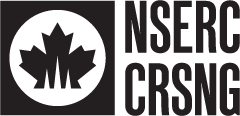Making blog
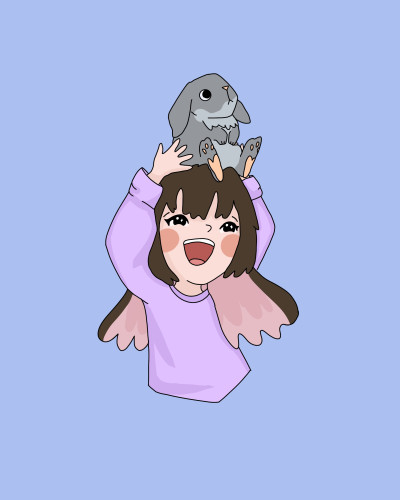
I started planning out the animation with a storyboard. A storyboard is little drawings of each scene in the animation. These little drawings help me visualize each part of the animation!

(English version below).
J’ai bien aimé fabriquer ce modèle. Simon avait une excellente idée d’invention pour nettoyer la surface des océans. L’idée d’un scooper était particulièrement innovatrice. Les photos et le vidéo qui suivent montre le modèle dans sa forme finale : les lumières de navigation rouges et vertes scintillent à leur tour, la roue à aubes et le scooper tournent ensemble et le klaxon du bateau se fait entendre.
(Version française plus haut).
It was a very interesting experience to build this model. Simon had a most clever idea for a vessel that would clean floating debris on the surface of the oceans. The concept of the scooper was particularly inventive.
The attached pictures and video show the final model: we can see the red and green navitation lights flashing, the paddle wheels turning as well as the scooper and conveyor belt.
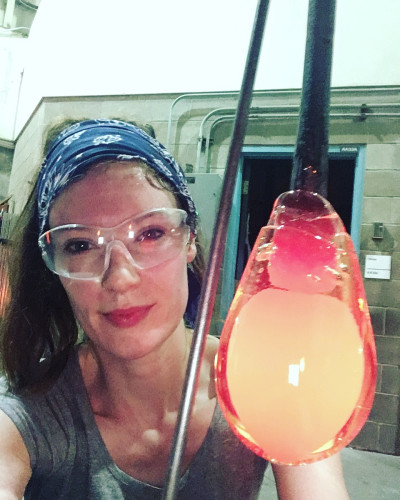
Next step was to cut and assemble various yellow textile panels that emulate robotic patches for the tentacles! They will be stuffed to feel squishy yet firm and then attached to the octapus head. Note * the tips of the tentacles have are stuffed with beans to add a little weight and insinuate "slappability"!

I decided to make the color of the box different from Jayla's drawing because it allowed the fish and its features to be the focus of attention. In Jayla's drawing the colors yellow, black and white are 3 of the 4 colors of the Mi'kmaq Medicine Wheel, so I opted to use black for the box to stay with her color choices and relate it to the Medicine Wheel. The final design decision I made was to use specific printer infill settings to produce the unique "fish-scale" like pattern on the outside surface of the prints.
After finalizing the style and finishing the 3D model of the fish, I started printing out test parts to see how they'd fit. Instead of using things like snap-fits or nuts and bolts for the connectors, I designed to use velcro to make it easy for Jayla, the Little Inventor, to take it apart and look inside whenever she wanted. This also fit the sustainability and design-by-nature themes as velcro was inspired by the burrs of the burdock plant!
- Jordan
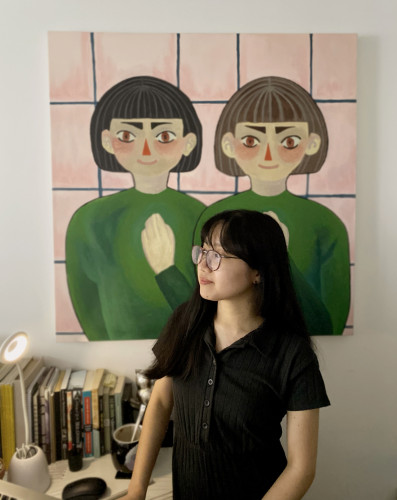
Making the animatic! I had to compile all my loose paper notes to form a cohesive narrative, I had them numbered and ready to go but I also need to figure out the phasing and the timing of my animation, that's where the animatic comes in handy! For this I drew them all digitally and added arrows and directions for myself, that make's it easier to follow. I love making animatics, mostly because I can finally see how the animation is going to look like, minus the colour and the smooth transitions, of course, but this is where it really starts to take shape, which is really exciting.

Now I am ready to start animating! Back to the string and tape. First, I created the "underwater" scene with real fish tank items, added some paper bubbles for fun! The tricky part here was balancing the octopus and shark on strings, I felt like a real puppeteer. Once I had all the pictures I needed to animate, I illustrated the water background and then filmed some ink being shot into a water tank to create the octopus ink effect.

The first thing I did was take some pictures of the glass characters on a white background so that I could later cut them out in photoshop. The challenging part was trying to figure out how to get these little guys to stand up for the picture! Thankfully, I had lots of string and tape to make this work. Then, I created storyboards to help me figure out what the animation will look like.
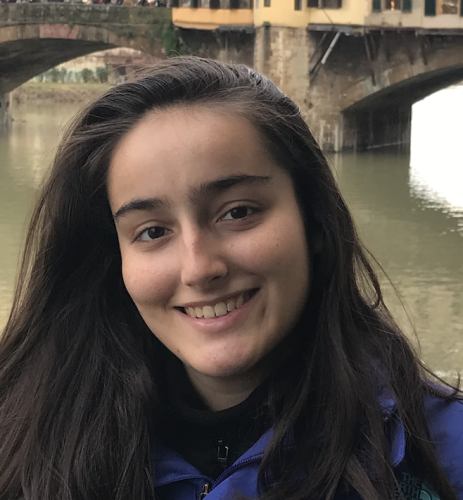
The process in how the animation was produced starts with me drawing assets digitally. Assets are the visuals elements, such as, Évangeline and Oscar's invention and backgrounds that I added in the animation.
I developed the drawing assets in the Adobe Photoshop software. Afterwards, I transferred those assets into another software called Adobe After Effects where I start using different tools to animate and composite with their invention.
To show 'La méduse' mechanism, I think that demonstrating how the jellyfish identifies trash, collects oil and the interior deposit represent the most significant aspects about this idea.
Consequently, in the animation I diminish the opacity, so the audience can see how the jellyfish's internal structure functions.
Underneath, there is a compilation of screenshots breakdowns of one of the animation scenes, background and the interior part of 'La méduse'.

I e-meet Évangeline and Oscar to get better idea of how the mechanisms of their amazing invention works. It was extremely enjoyable to get to know and talk to them as well as get their feedback on what they think about the project! I also, had the pleasure to meet Jill, their teacher and one of their mums as well!
Subsequently, therefore, I changed the character design based on their feedback and guidance.

After completing the concept art, I figured out the color palette of the character design. Later, I started doing the storyboard rough outlines of a small story to combine all these elements. The rough storyboard I created to give a north to this animation narrative.

To bring to life Évangeline and Oscar’s idea, I initiated a brainstorming process to find out how their invention works. Therefore, I broke down their drawing into initial traditional sketches. In addition, I developed a research to learn more about how our oceans get polluted, the morphology of jellyfishes and vivid colors.
After the research, digitally, I altered some of the machine character design and introduced not only the inside view but also the external appearance of ‘La Méduse’. The invention helps clean oceans absorbing the oil. Inside of the invention there is an oil deposit and a sponge system to absorb up ocean’s oil.

I chose to bring to life Évangeline and Oscar’s idea. Their idea is called “La méduse”. The word refers to a big jellyfish invention to help clean the oceans.
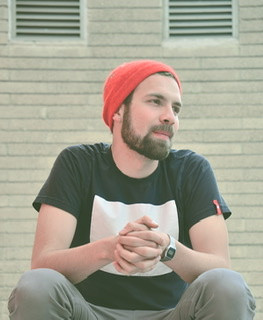
Thinking about plastic pollution and the current state of our oceans is a serious matter, I believe in everyone of us can make the difference, little by little changing our environment for the best making little actions and big impacts for a better tomorrow. So that’s why I believe a.k.a A.S.P Déchets 0.1 is a great invention idea to help to protect our oceans and water resources.
water resources are essential for human beings, therefore is our duty to keep them healthy and of course to protect them and give the best of us to build a better future. So, to help the people whose livelihoods come from working in them, and celebrate all the wonderful creatures which live underwater, this is the way to start thinking and approaching for a better world.

To come up with the general style, I put together a collage of different goldfish, robot fish, and First Nations artwork for inspiration. My main goal was to highlight Jayla’s core ideas that I took note of from our interview and make simple adjustments to the other attributes of her invention.
For the main body of the fish, I looked into different types of goldfish (because Jayla mentioned in our interview she drew hers like a goldfish), and found the common goldfish to be the most similar in terms of its color, the dorsal (top) fin, and body shape. I combined the aspects of the common goldfish with the aspects of the other artwork I found to model the fish body shape.
While it’s important to make the design more realistic when designing a prototype of someone’s idea like this, it’s also important to me as the designer to keep as many core features of the idea maker as possible. In this case there were many I wanted to keep, like the color and sustainability aspects noted in the first blog post. In this post I’ll go over a couple more features of Jayla’s artwork that really stood out to me to keep in the design, the eye and the style of its mouth.
The style Jayla drew the mouth in was very unique and I liked how it conveyed the “robot” aspect of her fish. For the mouth, I imported the image of Jayla’s artwork into the 3D modelling software I’m using so I could get the right size and position, then redrew it very close to the original (seen in the video).
I did something similar for the eye, I really liked how Jayla drew it and wanted to preserve its style completely because it stood out to me as the most prominent feature when I first saw her artwork. For this, I imported the image of Jayla’s robot fish eye into a graphics editor and isolated the shape of the eye, then I uploaded the image to the 3D modelling software TinkerCAD to generate the 3D model. This was a quick and easy way to make a 3D model of a simple part from a real drawing, and because the softwares used are both, free any little inventors out there can do it too!
- Jordan

Hello there! My name is Jordan Alexander and I am a science education facilitator at Ulnooweg’s Digital Mi’kmaq initiative. My background is in Mechanical Engineering and in my spare time I enjoy skateboarding, surfing, hiking and using 3D printing to solve the simple problems in my everyday life and we’re really excited to have collaborated with Little Inventors Mission to protect our Oceans and bring our selected student, Jayla’s invention to reality.
Digital Mi’kmaq is an Indigenous-led initiative, a program of the Ulnooweg Education Centre that aims to create lasting foundational change for Indigenous youth and communities through the interplay of science, culture, education and innovation.
We've had so many wonderful inventions to choose from and when Jayla's drawing was selected, we wanted to take part in bringing her invention to life. We really enjoyed her idea and art style as it is very unique, imaginative and creative and we couldn't wait to talk to her and learn more about what inspired her.
As an Indigneous non-profit science-based organization in Atlantic Canada, ocean sustainability is always top of mind and is very important to our people. We wanted to bridge innovation and technology into bringing Jayla’s robot to life - but in a sustainable and [non-harmful] way. We all know that plastic is an issue within our Ocean environments around the world and wanted to ensure that we still maintain the focus on protecting our oceans through this innovative project.
Digital Mi’kmaq delivers programs to Mi’kmaw youth in 3D modelling and 3D printing, we realized we could incorporate it into Jayla's project. But how do we do it in an eco-friendly way? Jayla's idea is based around to *remove* plastic from the ocean, and having decided on 3D printing we thought it would make sense to look into PLA, a bioplastic made from corn that is biodegradable. The plastic is also infused with a filler material of the powdered shells of scallops, a common shellfish (found in the ocean near Jayla's home) that further promotes the biodegradability/sustainability vision of Jayla. Additionally, the plastic has a pale gold color, identical to Jayla's artwork!
Our next step was to draft the body of the robot fish by designing a 3D model of it based on Jayla’s design. During our video call with Jayla, she mentioned her inspiration for the shape of the fish came from a goldfish. Following that, we researched the different body-styles of goldfish and looked at other artwork of robot fish to determine the dorsal fin shape and general body shape of the style we were looking to incorporate into our design.
For now, I will just take this time to say Wela’lioq (thank you) to Little Inventors and NSERC on behalf of myself, Jayla and the Digital Mi’kmaq team in inviting us to take on this opportunity to engage youth in learning science and talking about how we can use innovation to help protect our oceans. We look forward to sharing our journey in bringing Jayla’s robot fish to life and sharing it with all of you. Until next time, Numltis (see you later)!
- Jordan

The change of platform was not the easiest task, to make a recapitulation of pertinent knowledge to the realization of 3d models in other software was a great challenge that served as a fundamental axis to define topological details and their relationship with the form and use. It was totally worth the time and effort to bring Benjamin's great creation to life and movement. This contributed to the selection of strong decisions to make way for the final adjustments.

Well, this has been a very interesting project. Ava's idea of a submarine to clean the ocean water of plastic and metal pollution was very clever. I think I was able to bring her inventive idea to life through this little model. Once powered up, the model randomly switches on the propeller to drive the submarine, the beam lights to help guide the vessel through the murky waters, the sonar to detect potential obstacles or avoid schools of fish and finally an electromagnet to pick up metal debris. The waste is collected in a bag while the filtered water is channeled through the exhaust manifold.

Picking up from the last blog entry, we now look for sounds and then add them to the animation!
I start looking for sound effects by going onto freesound.org which is a website that provides all kinds of sound effects that are free to use! The main sound effects I tried looking for to add in the animation are waves (as requested by Lily-Ane during our zoom call), bubbles, ocean ambience and machine-like sounds for certain parts of the invention.
Once, I find the sounds that I think best suits the animation, I then download them and then add the sounds to the animation. I then continue to edit the sound until I feel like it flows with the animation.
After that we export the animation and it’s done! Yay! :D
Overall, I'm really happy with how the animation came out and I hope Lily-Ane likes it! :D

For the past few weeks, I’ve been working on animating the project! The process in how the animation is made starts with me drawing assets in Photoshop. Assets are the visuals or parts of the animation like the invention itself, backgrounds, and other elements that will get added in the animation.
After I finish drawing the assets in Photoshop, I then take those assets and bring them into After Effects where I start using different tools in the program to animate the invention!
During the process, I continue to edit and animate the invention until I am satisfied with the results. Some changes had to be made from the original plan such as having retractable claws instead of just having the claws in full length for easy mobility inside the invention. Don’t worry! Changes that happen during the process of a project is completely normal and often times can help improve it.
From there, the animation is almost complete and now, we have to look and add sounds! :D

(English version below)
Le projet tire à sa fin. J'ai assemblé l'électronique dans la carlingue du navire incluant un petit haut-parleur pour les effets sonores. J'ai décoré le "scooper" et le convoyeur de menu détritus pour ajouter une touche de réalisme. J'ai fabriqué un piédestal en pin avec un fini d'huile et de vernis afin de mettre en relief le modèle. Ce support en pin dissimule le circuit qui servira à animer le modèle.
(Version française plus haut)
The project is almost complete. I assembled the electronics below the deck, including the little speaker for the sound effects. I decorated the scooper and the conveyor belt with small pieces of plastic to simulate the real operation. I finally made a wooden base made of pine wood with an oil and varnish finish that will support the finished model. This base also hides the wiring connected to the switch that will be used to animate the model.
